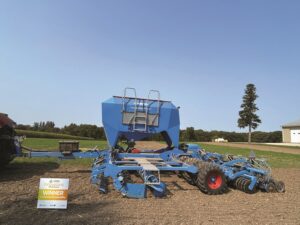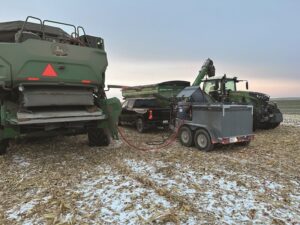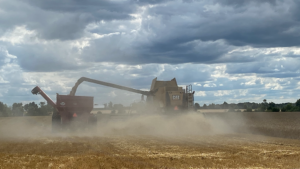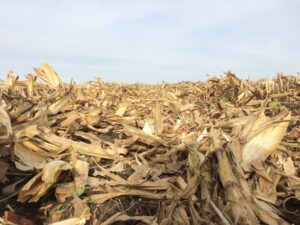Managing stored grain
AVOIDING INFESTATION AND CONTAMINATION
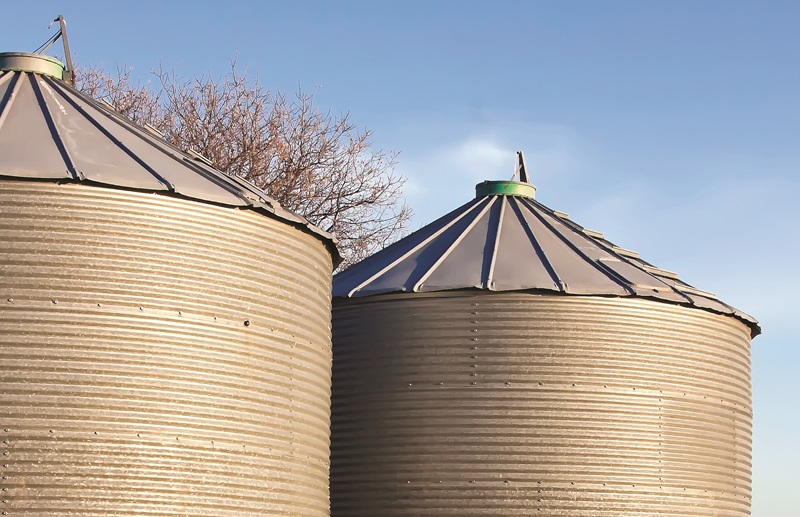
AS FARMERS GEAR UP FOR THE BUSY FALL HARVEST SEASON, NOW IS THE TIME TO THINK ABOUT GRAIN STORAGE to avoid issues due to infestations or contamination resulting in grain being rejected at the elevator.
The Canadian Grain Commission administers the Canada Grain Act, which states in section 57 (d) that “Except as authorized by regulation or by order of the Commission, no licensee operating an elevator shall receive into the elevator … any grain that the operator has reason to believe is infested or contaminated.”
Ontario’s grain export terminals are therefore legally prohibited from receiving and shipping out infested or contaminated grain and may reject farmer deliveries on this basis.
IT STARTS ON THE FARM
The adage ‘an ounce of prevention is worth a pound of cure’ applies when preventing insect infestations – with on- farm prevention measures being the first line of defence when it comes to managing contamination at the elevator.
Most infestations arise from a small number of insects already present in the farm environment, and good sanitation programs can help reduce their number in grain bins; infestations of stored grain rarely begin in the field. Some insects are picked up in combines but these are usually secondary pests of little concern. They readily die out in storage as they do not feed directly on the grain but are usually associated with moulds or fungi that may be on the grain stem in the field.
To prevent insect infestations:
- Monitor stored grain regularly to evaluate its condition and promptly address any issues.
- Equipment such as trucks, augers and combines should be cleaned of insects before the harvest begins.
- Avoid piling grain or auger spills; dispose of spilled grain or grind for feed use.
- Do not store old grain with newly harvested grain; grain residues in bins, even small amounts along edges or on ridges above access doors, can harbour insects.
- Maintain bins just as you would other equipment; cracks and holes that allow moisture or insects should be addressed each season.
- Maintain space between feed storage and grain storage on livestock operations.
- Do not store grain in buildings that shelter animals or hay; mangers, feed boxes and troughs are often infested with insects.
- Identify pests properly; proper identification and pest density assessment are important because management strategies may differ depending on the pest.
Aeration is also an important tool in the prevention of insection infestations. Temperature differences within the grain and between the grain and the outside air create convection currents that move air and moisture through the bin. In situations where the grain in the bin is warm and the outside air is cold, currents typically circulate from the interior wall of the bin to the centre. The result is that the core of the grain is warm and moist, allowing for the rapid growth of insects in the grain. If the grain bin has aeration equipment, it can be used to even out and lower the temperature of the grain in the bin.
Insect populations can’t always be completely killed with cold air in Ontario since temperatures do not remain as low as those in the Prairies. Aeration is still useful in Ontario since insect feeding and reproduction slow down considerably near 15 °C. Some insects will start to die off once the grain temperature in the bin falls below 10° C. If it is possible to get the grain temperature below 0° C, most insect pests will die within a couple of weeks.
If aeration is not available, it is possible to cool the grain by augering it out of the bin and into a clean truck. The goal is to lower the grain temperature to reduce insect reproduction and feeding. This will likely not kill off the insects, but there should be some mortality.
OTHER OPTIONS
In warmer temperatures, the management of insect pests typically relies on some form of pesticide treatment. Options may include insecticides applied as a spray, diatomaceous earth, or fumigation. In the case of fumigation, be aware that grain fumigants are very dangerous to work with and must be applied by a licensed applicator.
If fumigation is required, there are several factors that can affect the success of the treatment:
• The temperature of the grain must be above 5 °C, and it is recommended that it be above 10 °C.
• The grain bin should be very well sealed; cracks and open vents allow the fumigant to escape, which results in a less effective or potentially useless treatment.
More information on managing stored grain:
Ontario Ministry of Agriculture, Food and Agribusiness Agronomy Guide for Field Crops, chapter 12.
Canadian Grain Commission, Monitoring Grain Temperature and Aerating Grain. •








